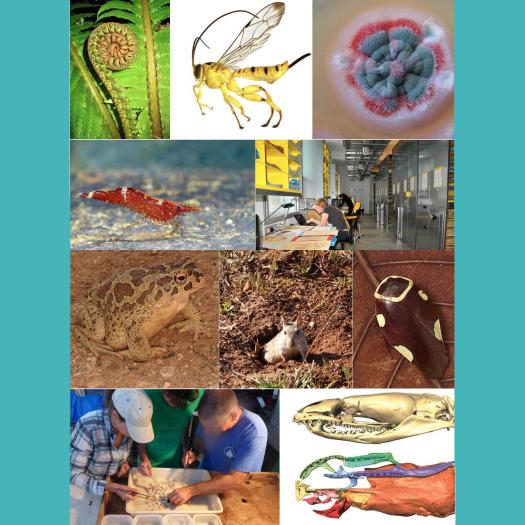Iván Rey-Rodríguez

Soutenance de thèse d'Iván Rey-Rodríguez

Soutenance de thèse d'Iván Rey-Rodríguez
Iván Rey-Rodríguez soutiendra sa thèse intitulée
« Reconstructing past climate and environment using rodent assemblages from the Middle to Late Pleistocene in western Asia »
Sous la direction de : Mme Christiane Denys, M. Juan Manuel López-García, Mme Emmanuelle Stoetzel et Mme Marta Arzarello.
Résumé: Au Quaternaire, l’Asie occidentale constitue une importante zone de passage entre l’Afrique, l’Asie et l’Europe. Afin de reconstruire les conditions paleoenvironnementales de cette région, nous avons étudié les rongeurs pléistocènes des sites archéologiques d’Azokh 1 (montagnes du Caucase) et de Kaldar (montagnes du Zagros) ainsi que des pelotes modernes de chouette effraie de Birecik (bord sud du Zagros). Nous avons défini des caractères crânio-dentaires diagnostiques des espèces à partir de la littérature et de collections de référence. Pour certains genres, comme Ellobius, nous avons dû préciser les caractères dentaires à l’aide d’une analyse de Morphométrie géométrique. La synthèse des données taxonomiques, taphonomiques et des reconstitutions environnementales montre que les faunes de rongeurs de cette période sont principalement composées de taxons d’origine asiatique et que les chaînes du Zagros et du Caucase sont une barrière pour les petits mammifères provenant d’Afrique.
–-
Jury composition :
Dr. Géraldine Veron, Prof., Muséum National d’Histoire Naturelle, Paris (France), President
Dr. Christiane Denys, Prof., Muséum National d’Histoire Naturelle, Paris (France), Reviewer
Dr. Juan Manuel López-García, Researcher, Institut Catalá de Paleoecologia Humana I Evolució Social, Tarragona (Spain), Reviewer
Dr. Marta Arzarello, Prof., Universitá degli Studi di Ferrara, Ferrara (Italy), Reviewer
Dr. Yolanda Fernández Jalvo, Researcher, Museo Nacional de Ciencias Naturales (CSIC), Madrid (Spain), Reviewer
Dr. Jordi Agustí, Prof., Institut Catalá de Paleoecologia Humana I Evolució Social, Tarragone (Spain), Reviewer
Dr. Lutz Maul, Researcher, SENCKENBERG Research Station of Quaternary Palaeontology, Weimar (Germany), External report
Dr. Lior Weisbrood, Researcher, Zinman Institute of Archaeology, Haifa University (Israel), External report
Abstract: Western Asia constitute an important enclave of passage between Africa, Asia and Europe. The main objective of this PhD thesis is to reconstruct the past environmental and climatic conditions using rodents assemblages, focusing in the archaeological sites of Azokh 1 Cave and Kaldar Cave. In parallel to this work, barn owl pellets from Birecik region have been analysed in order to obtain a better knowledge of rodent species. The correct identification of rodents was the main aim of this work, for that we used the literature and reference collections. However, for some genus, as Ellobius, it was not enough that is the reason because we applied the Geometric Morphometric method analysing the morphological and morphometric characters.
Summarizing, the different methodologies used allow us to improve the taxonomic identifications, identify the predators at the origins of the assemblages and to recover important paleoenvironmental and palaeoclimatic information in western Asia, especially in the Zagros mountains of Iran and the Caucasus region. Also, regarding the paleobiogeography of our rodent identified species, which are mainly composed by taxa of Asiatic origin, indicating that probably the Zagros and Caucasus mountains acted as a barrier for small mammals coming from Africa.


